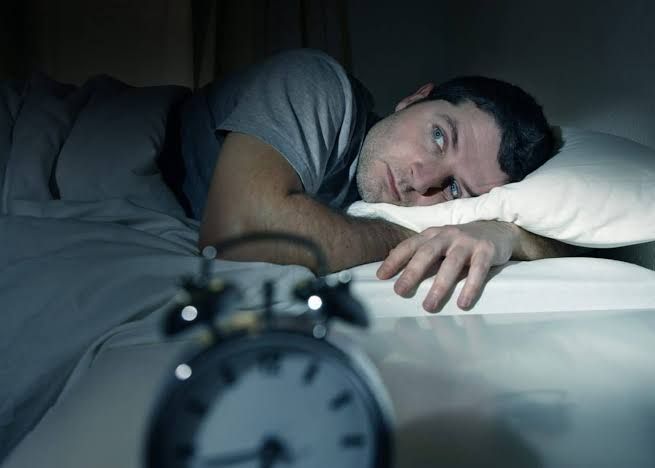
Insomnia, a pervasive sleep disorder characterized by persistent difficulty with sleep initiation, maintenance, or quality despite adequate opportunity, significantly impacts an individual’s physical and mental well-being. Within the broader spectrum of insomnia, a critical distinction is made between “organic” and “non-organic” forms.
Defining Non-Organic Insomnia
Non-organic insomnia, also commonly referred to as primary insomnia or psychophysiological insomnia, denotes a sleep disorder where the difficulty in sleeping is not attributable to a pre-existing medical condition, a substance (such as drugs or alcohol), or another primary mental disorder (like major depression or anxiety disorder that fully accounts for the sleep disturbance). Instead, it arises predominantly from learned sleep-preventing associations and excessive arousal, both cognitive and physiological, that become conditioned to the sleep environment and the act of trying to sleep.
Key characteristics that define non-organic insomnia include:
- Learned Maladaptive Associations: Over time, the bed and bedroom, initially intended for sleep, become associated with wakefulness, frustration, anxiety, and effortful attempts to sleep. This conditioning leads to increased alertness rather than relaxation when entering the sleep environment.
- Increased Cognitive Arousal: Individuals often experience racing thoughts, worry, rumination, and a preoccupation with sleep itself, particularly when attempting to fall asleep. This “performance anxiety” about sleep paradoxically prevents it.
- Increased Physiological Arousal: This manifests as heightened sympathetic nervous system activity, leading to symptoms like a racing heart, muscle tension, and a general sense of being “wired” or unable to relax physically, even when feeling tired.
- Misperception of Sleep: Some individuals with non-organic insomnia, specifically those with “paradoxical insomnia” (a subtype of non-organic insomnia), may significantly underestimate their total sleep time, reporting little to no sleep even when objective measures indicate they have slept for several hours.
- Perpetuating Factors: While initial sleep difficulties might be triggered by stress or an acute life event (leading to “adjustment insomnia,” another non-organic subtype), the condition persists due to ongoing negative thoughts, behaviors, and conditioning that prevent natural sleep from returning.
Unlike organic insomnia, which might be a symptom of conditions like sleep apnea, restless legs syndrome, chronic pain, or thyroid dysfunction, non-organic insomnia is a disorder in its own right, driven by behavioral and psychological factors. It is the most common form of chronic insomnia and has significant daytime consequences, including fatigue, impaired concentration, mood disturbances (irritability, anxiety, depression), reduced productivity, and impaired social functioning. Understanding these underlying mechanisms is crucial for effective treatment.
Management of Non-Organic Insomnia: A Step-by-Step Professional Guide
The management of non-organic insomnia is primarily non-pharmacological, with Cognitive Behavioral Therapy for Insomnia (CBT-I) recognized as the first-line and most effective long-term treatment. Pharmacological interventions may be considered for short-term use or in specific circumstances, but they generally serve as an adjunct to behavioral strategies. The approach is holistic and tailored to the individual’s specific profile.
Step 1: Comprehensive Assessment and Accurate Diagnosis
Before initiating any treatment, a thorough evaluation is essential to confirm the diagnosis of non-organic insomnia and rule out other potential causes of sleep disturbance.
- Detailed Sleep History: A clinician will conduct an in-depth interview covering sleep patterns, duration of sleep problems, daytime symptoms, sleep environment, pre-sleep routines, and any previous attempts at treatment.
- Sleep Diary: Patients are typically asked to maintain a sleep diary for one to two weeks, recording bedtime, wake time, sleep latency (time to fall asleep), number and duration of awakenings, perceived sleep quality, and daytime symptoms. This provides objective data on sleep patterns.
- Medical and Psychiatric Evaluation: A physical examination and review of medical history are crucial to rule out underlying medical conditions (e.g., chronic pain, thyroid disease, cardiovascular issues) or medication side effects that could disrupt sleep. Similarly, a psychiatric assessment helps determine if a primary mental health disorder is driving the insomnia.
- Rule Out Other Sleep Disorders: Tools like polysomnography (sleep study) may be used if there’s suspicion of underlying primary sleep disorders such as sleep apnea, restless legs syndrome, or narcolepsy, which require different management strategies.
Step 2: Non-Pharmacological Strategies (Cognitive Behavioral Therapy for Insomnia – CBT-I)
CBT-I is a multi-component therapy that addresses the cognitive, behavioral, and physiological factors contributing to non-organic insomnia. It is highly effective and provides sustainable results.
- 2.1 Stimulus Control Therapy (SCT): This core component aims to re-establish the bed and bedroom as cues for sleep and eliminate associations with wakefulness and activities incompatible with sleep.
- Rule A: Go to bed only when sleepy.
- Rule B: Use the bed and bedroom only for sleep and sexual activity. Avoid reading, watching TV, eating, or working in bed.
- Rule C: If unable to fall asleep within 15-20 minutes, or if awake for a similar period during the night, get out of bed and go to another room. Engage in a quiet, non-stimulating activity (e.g., reading a dull book, listening to quiet music) until sleepiness returns, then return to bed. Repeat as necessary.
- Rule D: Set a consistent wake-up time every day, including weekends, regardless of how much sleep was obtained. This helps regulate the circadian rhythm.
- Rule E: Avoid napping during the day, as naps can reduce “sleep drive” at night. If absolutely necessary, limit naps to 20-30 minutes and take them early in the afternoon.
- 2.2 Sleep Restriction Therapy (SRT): This technique, often perceived as counterintuitive, involves temporarily reducing the time spent in bed to closely match the actual amount of sleep obtained. This mild sleep deprivation increases sleep drive, making falling asleep easier and consolidating sleep.
- The patient’s initial “time in bed” (TIB) is set based on their average actual sleep time reported in the sleep diary.
- Once sleep efficiency (percentage of time in bed spent asleep) improves to a target level (e.g., 85%), the TIB is gradually increased in small increments (e.g., 15-20 minutes) until an optimal sleep duration is achieved. This is done under the guidance of a therapist.
- 2.3 Cognitive Restructuring (CR): This component addresses maladaptive thoughts and beliefs about sleep that fuel anxiety and perpetuate insomnia.
- Identify Negative Thoughts: Patients learn to recognize unhelpful thoughts, such as catastrophic predictions (“I’ll never sleep again,” “I can’t function on so little sleep”), unrealistic expectations (“I need exactly 8 hours of perfect sleep”), or misinterpretations of daytime fatigue.
- Challenge and Reframe: The therapist guides the patient in evaluating the evidence for these thoughts and replacing them with more balanced, realistic, and helpful perspectives. For example, “It’s uncomfortable not sleeping, but I have managed before, and my body will eventually sleep.”
- 2.4 Relaxation Techniques: These strategies help reduce the physiological and cognitive arousal that interferes with sleep.
- Progressive Muscle Relaxation (PMR): Systematically tensing and relaxing different muscle groups to become aware of and release tension.
- Diaphragmatic Breathing: Slow, deep breathing from the diaphragm to activate the parasympathetic nervous system, promoting relaxation.
- Mindfulness and Meditation: Focusing on the present moment, observing thoughts without judgment, and cultivating a non-reactive stance towards sleep-related worries.
- 2.5 Sleep Hygiene Education (SHE): While often insufficient on its own for chronic non-organic insomnia, sleep hygiene provides foundational principles for healthy sleep.
- Maintain a comfortable, dark, quiet, and cool sleep environment.
- Avoid heavy meals, caffeine, and alcohol close to bedtime.
- Engage in regular physical activity, but avoid vigorous exercise too close to sleep (e.g., within 3-4 hours of bedtime).
- Limit exposure to bright light (especially blue light from screens) in the evening.
- Establish a relaxing pre-sleep routine.
Step 3: Pharmacological Interventions (Adjunctive and Short-Term)
Medications are generally reserved for acute, severe episodes of insomnia, when non-pharmacological approaches are insufficient, or as a temporary bridge to effective behavioral therapy. They are rarely a long-term solution for non-organic insomnia due to potential side effects, tolerance, and dependence.
- Benzodiazepine Receptor Agonists (BZRAs):
- Non-benzodiazepines (“Z-drugs”): Zolpidem, eszopiclone, zaleplon. These are often preferred due to a lower risk of dependence compared to traditional benzodiazepines, but still carry risks. They primarily reduce sleep latency and nocturnal awakenings.
- Benzodiazepines: Temazepam, lorazepam, estazolam. Generally used with more caution due to higher risks of dependence, rebound insomnia, and cognitive impairment, particularly in older adults.
- Melatonin Receptor Agonists: Ramelteon. Acts on melatonin receptors to regulate the sleep-wake cycle, generally well-tolerated with a low risk of dependence.
- Orexin Receptor Antagonists: Suvorexant, lemborexant. These medications block the wake-promoting effects of orexin, helping to induce and maintain sleep.
- Antidepressants with Sedative Properties: Trazodone, doxepin. Often used off-label for insomnia at lower doses than those used for depression. Potential for side effects needs to be considered.
- Over-the-Counter (OTC) Sleep Aids: Many contain antihistamines (e.g., diphenhydramine). These are generally not recommended for chronic insomnia due to limited efficacy, anticholinergic side effects (e.g., dry mouth, constipation, cognitive impairment), and potential for tolerance.
Any pharmacological treatment should be initiated and closely monitored by a healthcare professional, with a clear plan for dose titration and discontinuation once behavioral strategies become effective.
Step 4: Lifestyle Modifications and Adjunctive Approaches
Beyond the core CBT-I components, broader lifestyle factors play a supportive role in enhancing sleep quality.
- Stress Management: Incorporate techniques such as yoga, meditation, deep breathing exercises, spending time in nature, or engaging in hobbies to reduce overall stress levels, which often exacerbate insomnia.
- Balanced Diet: A balanced diet supports overall health, contributing to better sleep. Avoid large meals close to bedtime, and be mindful of blood sugar fluctuations.
- Regular Exercise: Consistent physical activity (but not too close to bedtime) can improve sleep depth and quality by reducing stress and promoting healthy circadian rhythms.
- Mindfulness and Acceptance: For some, an acceptance-based approach can be helpful, reducing the struggle and anxiety associated with not sleeping.
- Light Exposure: Optimize natural light exposure during the day and minimize artificial bright light in the evening to reinforce a healthy circadian rhythm.
Step 5: Follow-up and Relapse Prevention
Effective management of non-organic insomnia requires ongoing vigilance and a strategy for maintaining gains and preventing relapse.
- Regular Follow-up: Scheduled appointments with the therapist or physician allow for monitoring of progress, fine-tuning of strategies, and addressing any emerging challenges.
- Skill Reinforcement: Patients are encouraged to continue practicing the CBT-I skills learned, even after sleep has improved. These skills become tools for lifelong sleep health.
- Early Detection of Relapse: Patients should be educated on identifying early warning signs of sleep difficulties returning (e.g., increased worry about sleep, inconsistent sleep patterns) and encouraged to re-engage their learned coping strategies promptly.
- Booster Sessions: For some individuals, periodic “booster sessions” of CBT-I may be beneficial to reinforce techniques and address new stressors that could impact sleep.
- Adaptation: Life circumstances change, and sleep needs or patterns might be affected. The learned strategies provide a framework for adapting to these changes.
In conclusion, non-organic insomnia is a treatable condition stemming from learned behaviors and heightened physiological and cognitive arousal. While challenging, its management is highly effective when approached systematically, with Cognitive Behavioral Therapy for Insomnia (CBT-I) forming the bedrock of treatment. By adhering to a comprehensive, step-by-step plan that addresses the root causes rather than just the symptoms, individuals can achieve sustained improvements in sleep quality and overall well-being.







